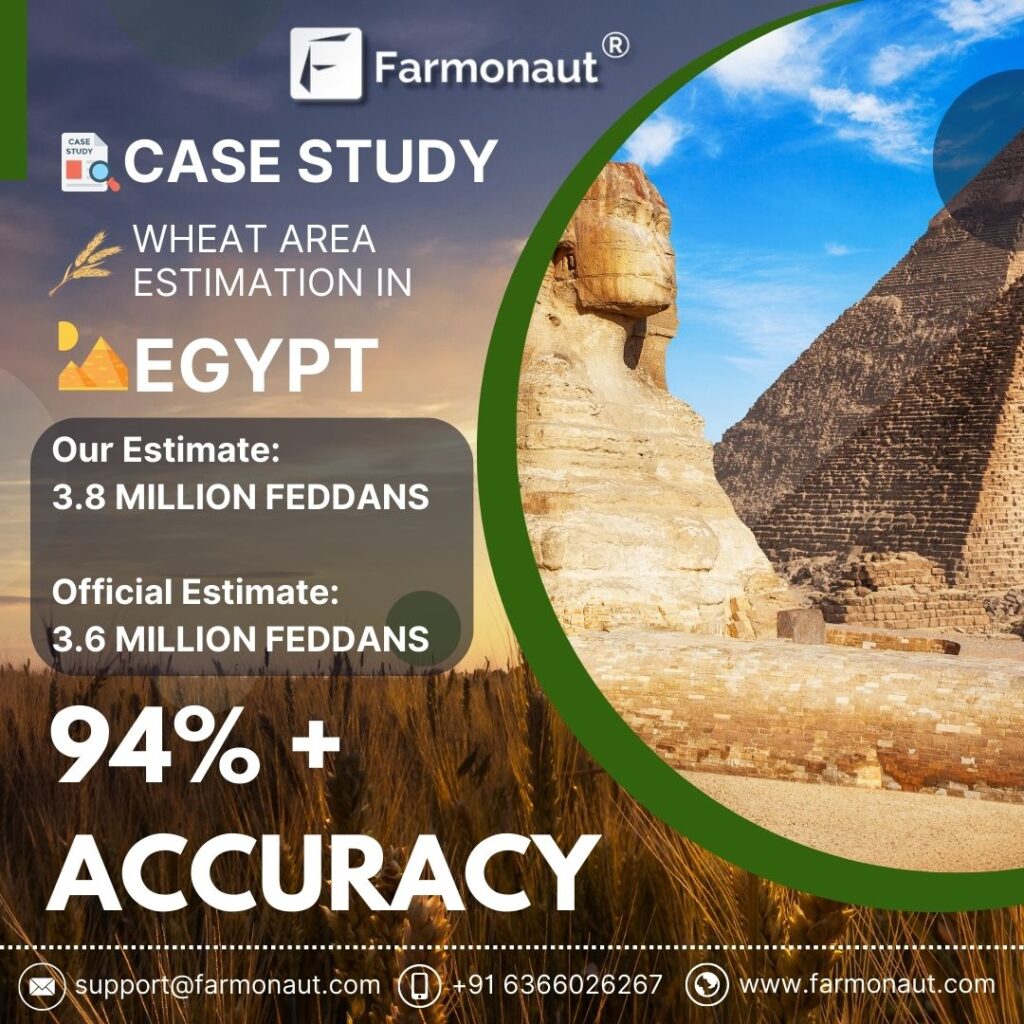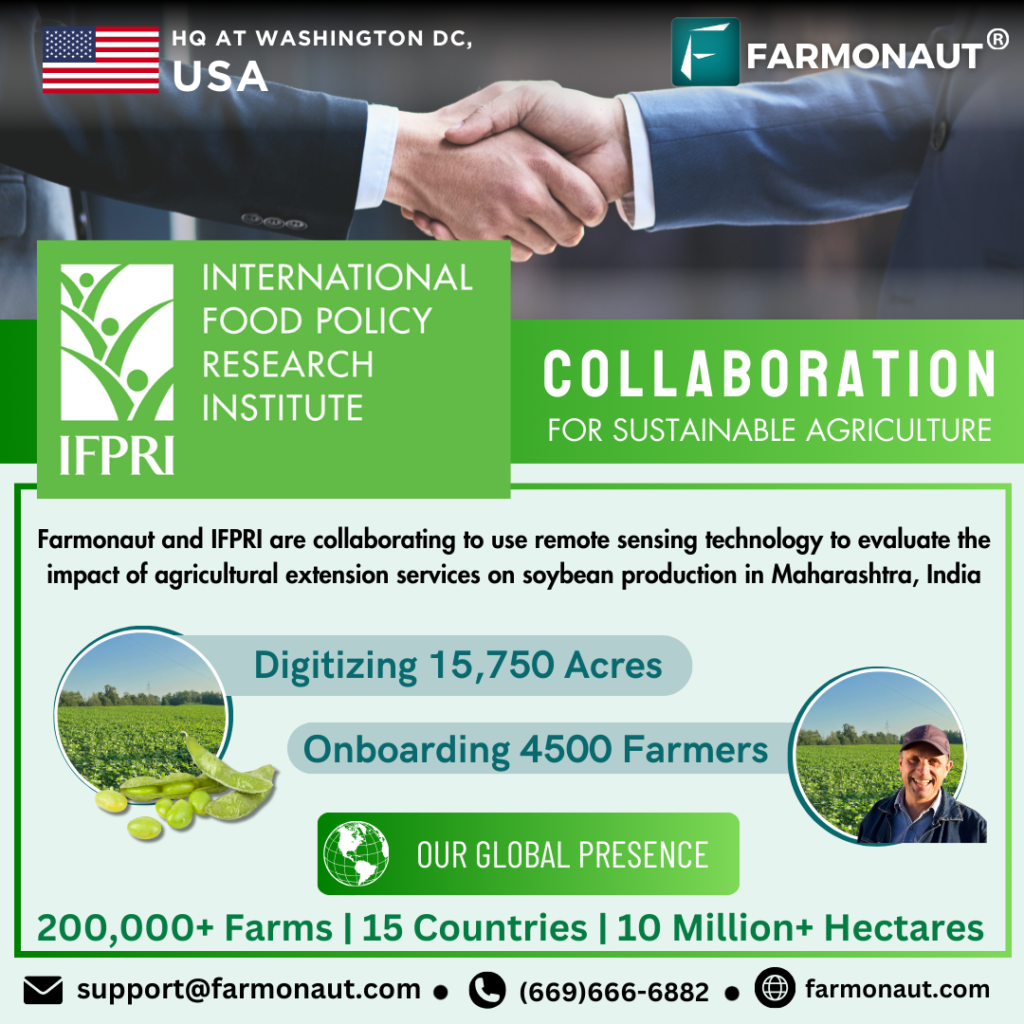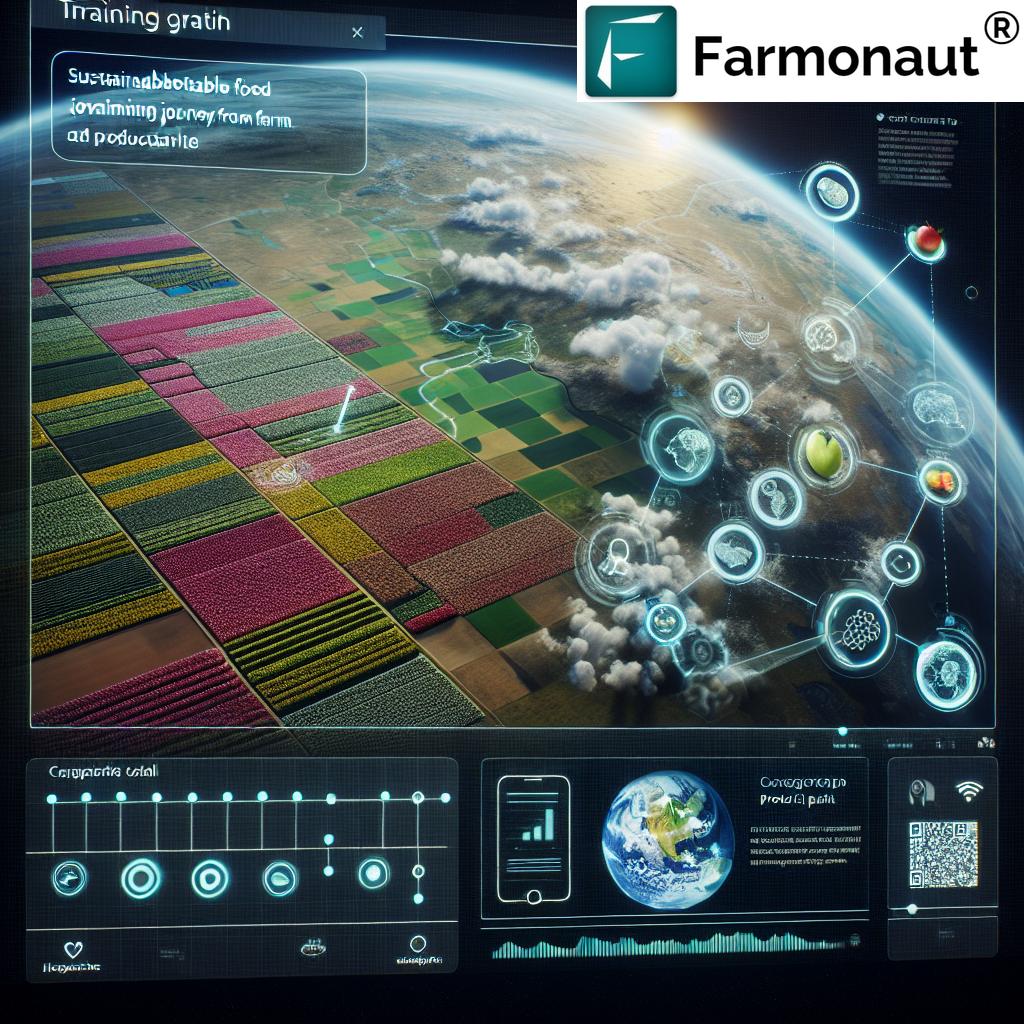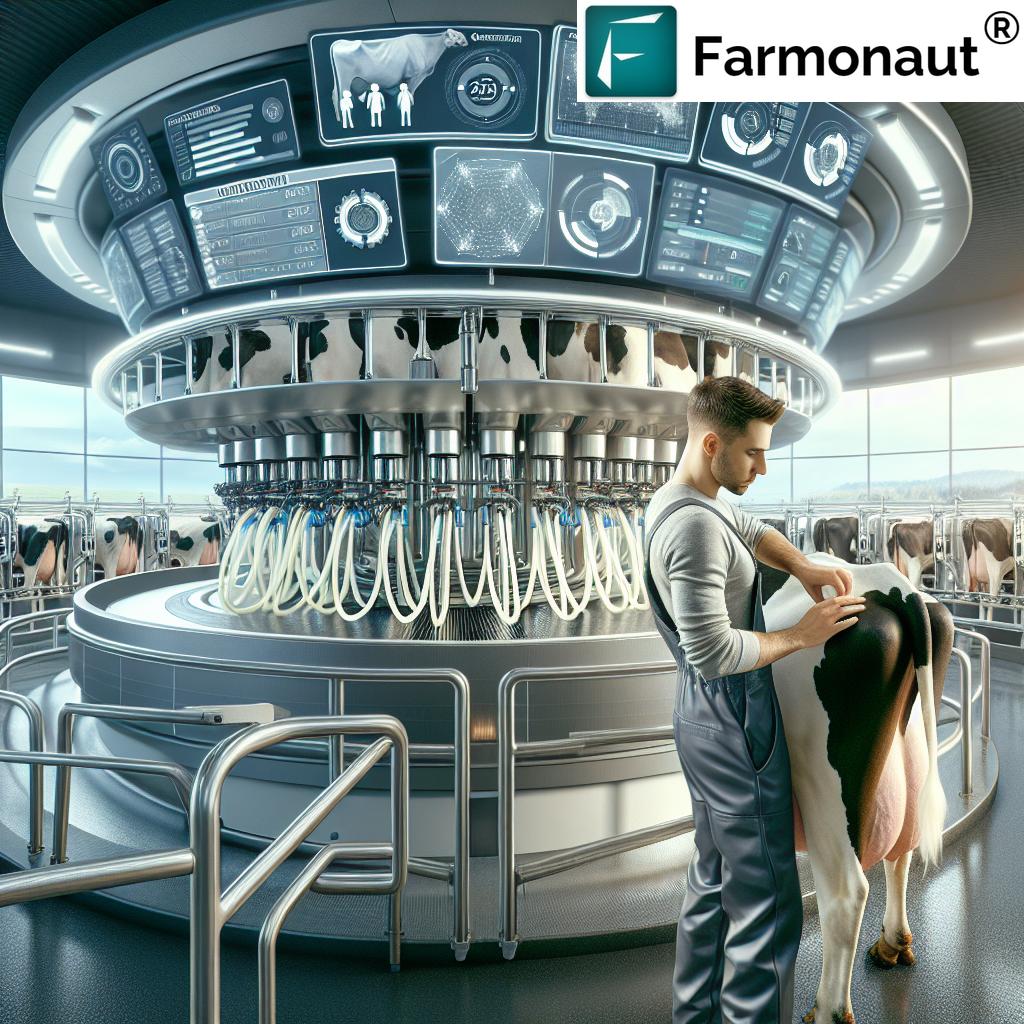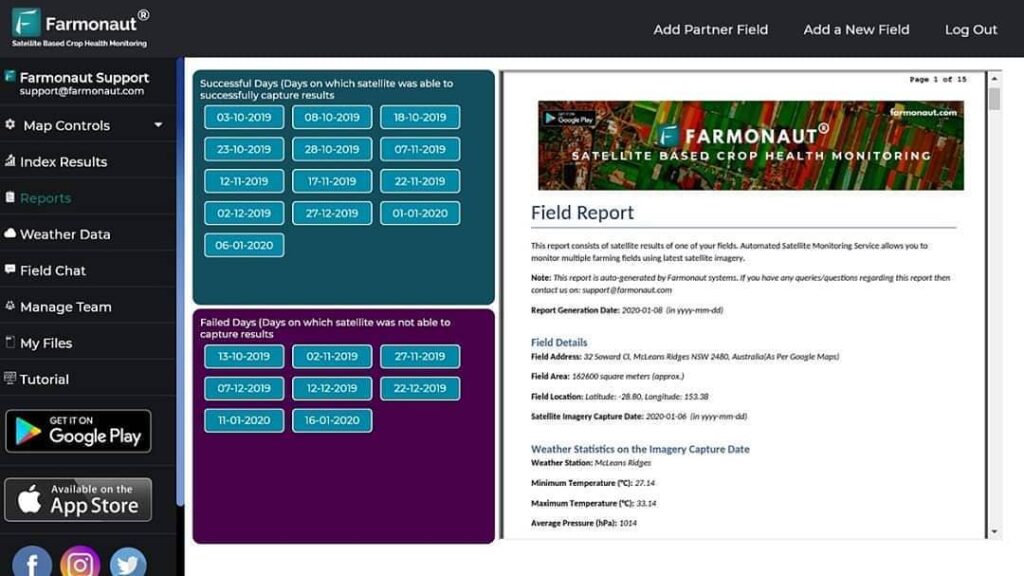Essential Guide: Ensuring Header Trailer Compliance for Safe Combine Road Transport During Harvest Season
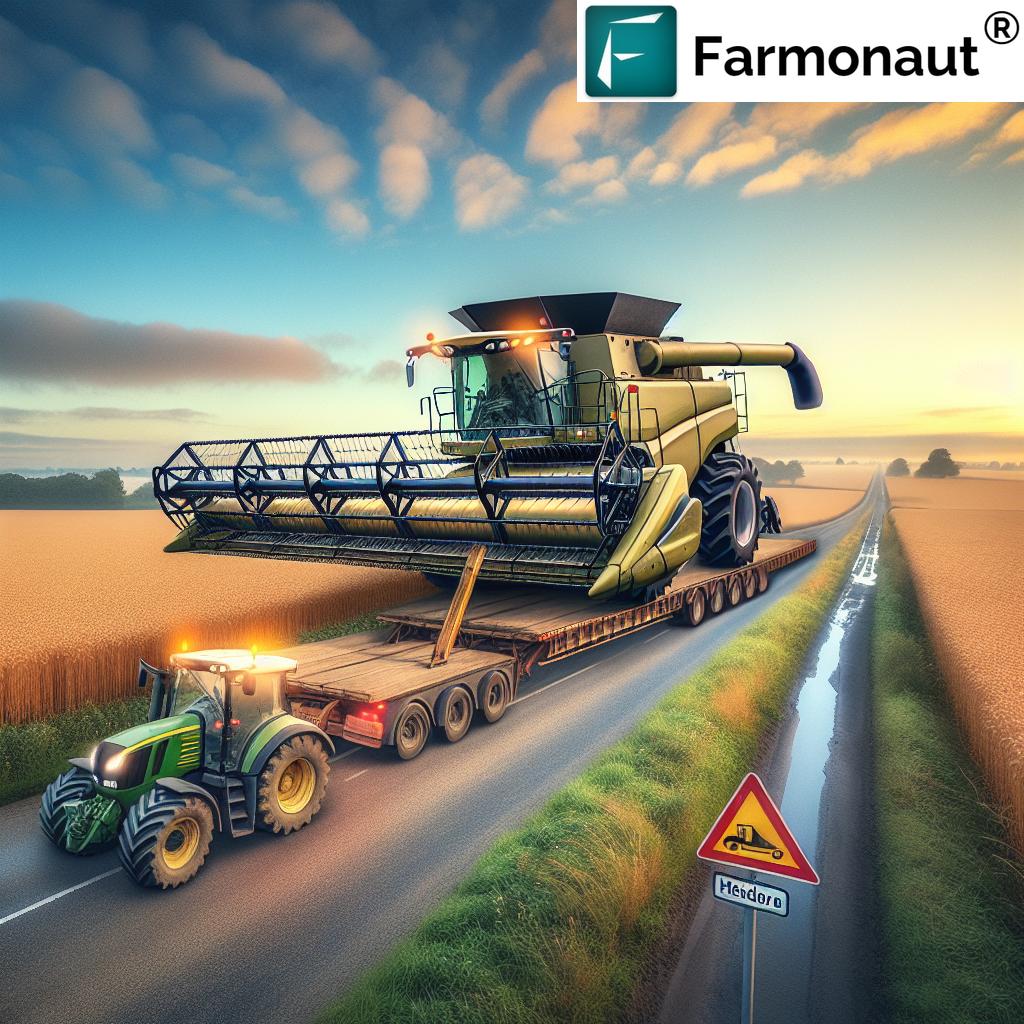
“Agricultural trailers over 3.5 tonnes require advanced braking systems for road safety compliance.”
As harvest season approaches, ensuring combine road safety and header trailer compliance becomes paramount for farmers and contractors across the arable landscape. At Farmonaut, we understand the critical importance of adhering to the latest regulations for agricultural machinery transport. In this comprehensive guide, we’ll explore essential aspects of farm equipment compliance, focusing on header trailer regulations and harvest season safety measures.
Before we delve into the intricacies of header trailer compliance, let’s take a moment to understand why this topic is crucial for modern farming operations.
The Importance of Header Trailer Compliance
Combine harvesters are the workhorses of modern agriculture, and their efficient transport between fields is vital for a successful harvest. However, these massive machines, particularly when equipped with wide headers, present unique challenges on public roads. Ensuring compliance with road safety regulations is not just a legal requirement; it’s a moral obligation to protect both farm workers and other road users.
Here are some key reasons why header trailer compliance should be a top priority:
- Safety: Properly secured and transported headers reduce the risk of accidents on public roads.
- Legal Compliance: Adhering to regulations helps farmers avoid fines and legal issues.
- Efficiency: Compliant equipment moves smoothly between fields, optimizing harvest operations.
- Public Perception: Responsible transport practices improve the image of the farming community.
Now that we’ve established the importance of compliance, let’s dive into the specifics of header trailer regulations.
Understanding Agricultural Trailer Classification
The first step in ensuring compliance is understanding how agricultural trailers are classified. This classification system helps determine which regulations apply to your specific equipment.
Agricultural trailers are typically classified based on their gross weight and intended use. Here’s a general breakdown:
- Light Trailers: Under 3.5 tonnes gross weight
- Medium Trailers: 3.5 to 18 tonnes gross weight
- Heavy Trailers: Over 18 tonnes gross weight
Header trailers often fall into the medium or heavy categories, depending on the size of the header they’re designed to transport. It’s crucial to know your trailer’s classification, as it directly impacts compliance requirements.
Length Restrictions for Farm Vehicles
One of the most important aspects of header trailer compliance is adhering to length restrictions. These restrictions are in place to ensure that oversized agricultural loads can be safely maneuvered on public roads.
While specific regulations may vary by region, here are some general guidelines for combine and header trailer length restrictions:
- Maximum combined length (tractor + trailer): 18.75 meters
- Maximum trailer length: 12 meters
- Maximum header overhang: Typically 1-2 meters beyond the trailer bed
It’s important to note that these are general guidelines, and local regulations may impose stricter limits. Always check with your local authorities for the most up-to-date information on length restrictions in your area.
Braking System Requirements
Effective braking is crucial for the safe transport of heavy agricultural equipment. The braking system requirements for header trailers depend on their weight classification and intended use.
Here’s an overview of braking system requirements:
- Light Trailers (under 3.5 tonnes): May only require overrun brakes
- Medium Trailers (3.5-18 tonnes): Typically require hydraulic or air brake systems
- Heavy Trailers (over 18 tonnes): Must have air brake systems with ABS (Anti-lock Braking System)
For header trailers, which often fall into the medium or heavy categories, it’s essential to ensure that your braking system meets or exceeds the required standards. Regular maintenance and testing of these systems are crucial for safe operation.
Width-Based Speed Limits
When transporting wide headers on public roads, farmers must adhere to specific speed limits based on the overall width of their load. These speed restrictions are designed to enhance safety and reduce the risk of accidents.
Here’s a general guide to width-based speed limits:
- Up to 2.55m wide: Normal speed limits apply
- 2.55m to 3.5m wide: Maximum speed of 40 mph (64 km/h) on single carriageways, 50 mph (80 km/h) on dual carriageways
- Over 3.5m wide: Maximum speed of 20 mph (32 km/h) on all roads
Remember, these are general guidelines, and local regulations may impose different or more stringent speed limits. Always prioritize safety and adjust your speed according to road and weather conditions.
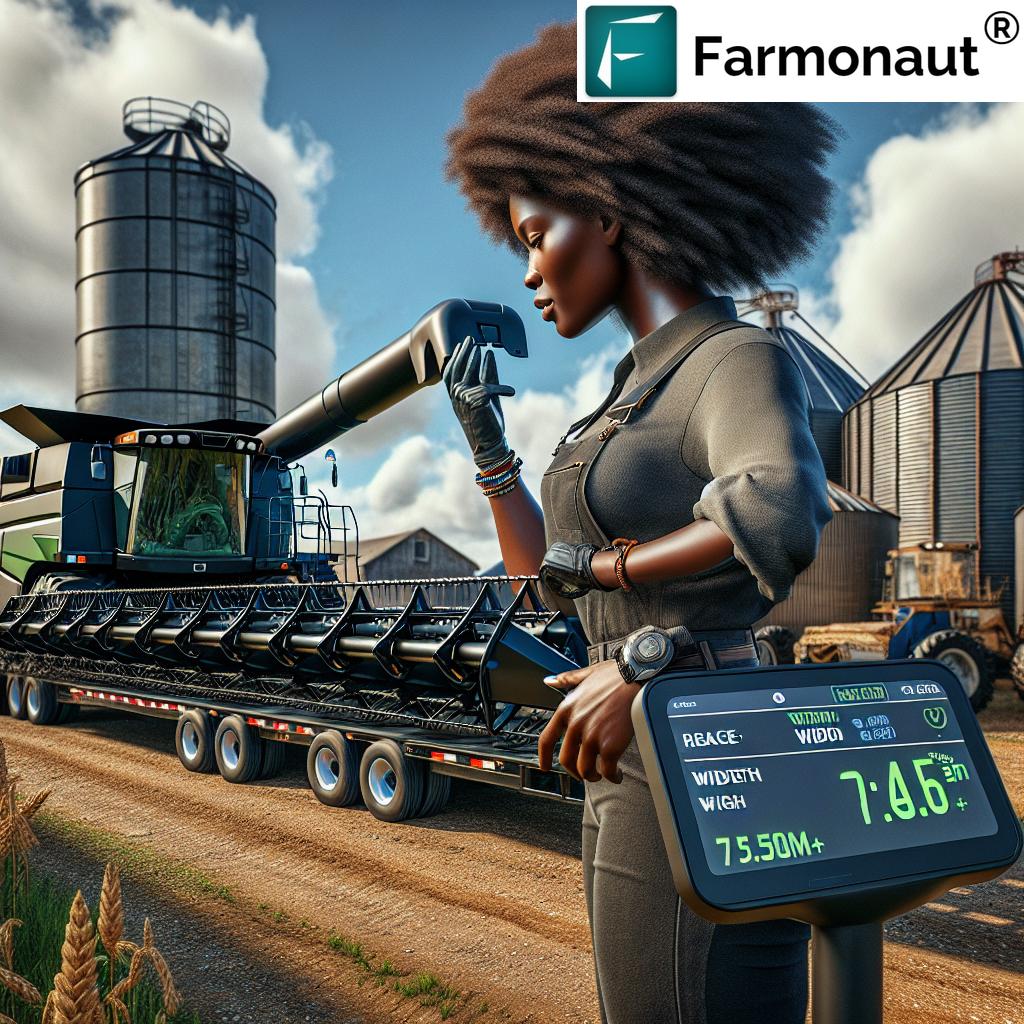
“Combines with headers wider than 3.5 meters face specific speed limits on public roads during transport.”
Safety Measures for Oversized Agricultural Loads
Transporting oversized headers requires additional safety measures to ensure the protection of both the equipment and other road users. Here are some essential safety practices to implement:
- Proper Marking: Use reflective tape and warning flags to clearly mark the extremities of wide loads.
- Escort Vehicles: For exceptionally wide loads, consider using escort vehicles to warn other drivers.
- Lighting: Ensure all required lights are functional and visible, including side marker lights for wide loads.
- Secure Load: Use appropriate tie-downs and check them regularly during transport.
- Route Planning: Plan your route to avoid narrow roads, low bridges, and high-traffic areas when possible.
By implementing these safety measures, farmers can significantly reduce the risks associated with transporting oversized agricultural loads on public roads.
Header Trailer Management Best Practices
Effective header trailer management goes beyond mere compliance; it’s about optimizing safety and efficiency throughout the harvest season. Here are some best practices to consider:
- Regular Inspections: Conduct thorough pre-trip inspections of your header trailer, focusing on tires, brakes, lights, and coupling mechanisms.
- Driver Training: Ensure all operators are properly trained in the safe transport of wide loads and familiar with local regulations.
- Maintenance Schedule: Implement a rigorous maintenance schedule to keep your header trailer in top condition throughout the season.
- Weather Considerations: Be prepared to adjust your transport plans based on weather conditions, particularly in high winds or poor visibility.
- Documentation: Keep all necessary permits and documentation readily available during transport.
By following these best practices, farmers can ensure smooth and safe operations throughout the busy harvest season.
Leveraging Technology for Compliance and Safety
In today’s digital age, technology plays a crucial role in enhancing farm safety and compliance. At Farmonaut, we’re at the forefront of integrating advanced technology into agricultural operations. While our primary focus is on crop monitoring and management, the principles of data-driven decision-making apply equally to equipment management and safety.
Here’s how technology can support header trailer compliance and safety:
- GPS Tracking: Monitor the location and speed of your agricultural vehicles in real-time.
- Telematics: Gather data on vehicle performance and driver behavior to identify areas for improvement.
- Digital Compliance Tools: Use software to stay up-to-date with the latest regulations and manage compliance documentation.
- Weather Monitoring: Integrate real-time weather data into your transport planning to enhance safety.
While Farmonaut’s core services focus on crop management, our commitment to advancing agricultural technology aligns with the broader goal of enhancing farm safety and efficiency across all operations.
Explore Farmonaut’s innovative solutions:
Header Trailer Compliance Quick Reference Guide
| Trailer Classification | Maximum Length (m) | Width-Based Speed Limits (km/h) | Braking System Requirements | Safety Measures for Oversized Loads |
|---|---|---|---|---|
| Small (< 3.5t) | 12 | Standard road limits | Overrun brakes | Standard markings |
| Medium (3.5t – 18t) | 12 | 64 (single), 80 (dual carriageway) | Hydraulic or air brakes | Reflective tape, warning flags |
| Large (> 18t) | 12 | 32 (all roads) | Air brakes with ABS | Escort vehicles, extensive marking |
| 7.5m+ Headers | 18.75 (combined) | 32 (all roads) | Air brakes with ABS | Escort vehicles, route planning, special permits |
The Role of Farm Management Software in Equipment Compliance
While Farmonaut specializes in satellite-based crop monitoring and management, the principles of data-driven agriculture extend to equipment management as well. Modern farm management software can play a crucial role in ensuring header trailer compliance and overall farm safety.
Here’s how integrated farm management solutions can support equipment compliance:
- Maintenance Scheduling: Track and schedule regular maintenance for header trailers and other farm equipment.
- Compliance Tracking: Keep digital records of inspections, certifications, and permits related to agricultural machinery.
- Route Optimization: Plan the most efficient and safest routes for transporting wide loads between fields.
- Weather Integration: Incorporate real-time weather data to make informed decisions about equipment transport.
While these features may not be directly related to Farmonaut’s core offerings, they demonstrate the broader potential of agricultural technology in enhancing farm operations across all aspects, including equipment compliance and safety.
The Future of Agricultural Machinery Transport
As we look to the future, it’s clear that the landscape of agricultural machinery transport will continue to evolve. Emerging technologies and changing regulations will shape how farmers approach header trailer compliance and combine road safety.
Some trends to watch include:
- Autonomous Transport: Self-driving technology may eventually be applied to agricultural machinery transport, potentially enhancing safety and efficiency.
- Enhanced Telematics: More sophisticated data gathering and analysis tools will provide deeper insights into equipment performance and compliance.
- Stricter Emissions Standards: Future regulations may impose stricter emissions requirements on agricultural vehicles, impacting transport practices.
- Advanced Materials: Lighter, stronger materials may allow for the development of more compliant and efficient header trailers.
While Farmonaut’s focus remains on crop monitoring and management, we’re committed to staying at the forefront of agricultural technology. Our ongoing research and development efforts contribute to the broader advancement of the agricultural sector, including areas like equipment management and safety.
Conclusion: Prioritizing Safety and Compliance in Header Trailer Transport
As we’ve explored throughout this guide, ensuring header trailer compliance and combine road safety is a multifaceted challenge that requires attention to detail, adherence to regulations, and a commitment to best practices. By understanding the complexities of agricultural trailer classification, length restrictions, braking requirements, and safety measures for oversized loads, farmers can navigate the busy harvest season with confidence and peace of mind.
Remember, compliance is not just about avoiding fines or legal issues; it’s about protecting your valuable equipment, your workers, and other road users. By prioritizing safety and staying informed about the latest regulations, you’re contributing to the overall well-being of the farming community and the public at large.
At Farmonaut, while our primary focus is on advancing crop monitoring and management through satellite technology, we recognize the interconnected nature of all aspects of modern farming. The same principles of data-driven decision-making and technological innovation that drive our crop management solutions can be applied to equipment management and safety practices.
As you prepare for the upcoming harvest season, we encourage you to review your header trailer compliance measures, invest in proper training for your team, and consider how emerging technologies might enhance your farm’s overall safety and efficiency. By staying proactive and embracing innovation, you’ll be well-positioned to meet the challenges of modern agriculture head-on.
Explore Farmonaut’s innovative agricultural solutions:
FAQs: Header Trailer Compliance and Combine Road Safety
- Q: How often should I inspect my header trailer for compliance?
A: We recommend conducting a thorough inspection before each use, with more comprehensive checks at the beginning and end of each harvest season. - Q: Are there specific insurance requirements for transporting wide headers?
A: Insurance requirements can vary, but it’s essential to inform your insurer about the specific equipment you’re transporting and ensure you have adequate coverage for oversized loads. - Q: Can I transport my combine header at night?
A: Night transport of wide loads is often restricted. Check local regulations, as you may need special permits or additional lighting for night-time transport. - Q: What should I do if I encounter low bridges or narrow roads during transport?
A: Plan your route in advance to avoid such obstacles. If unexpected issues arise, it may be necessary to find an alternative route or seek assistance from local authorities for safe passage. - Q: Are there specific weather conditions in which I should avoid transporting wide headers?
A: High winds, heavy rain, or poor visibility conditions can make transporting wide loads particularly dangerous. Always prioritize safety and consider postponing transport in adverse weather.









